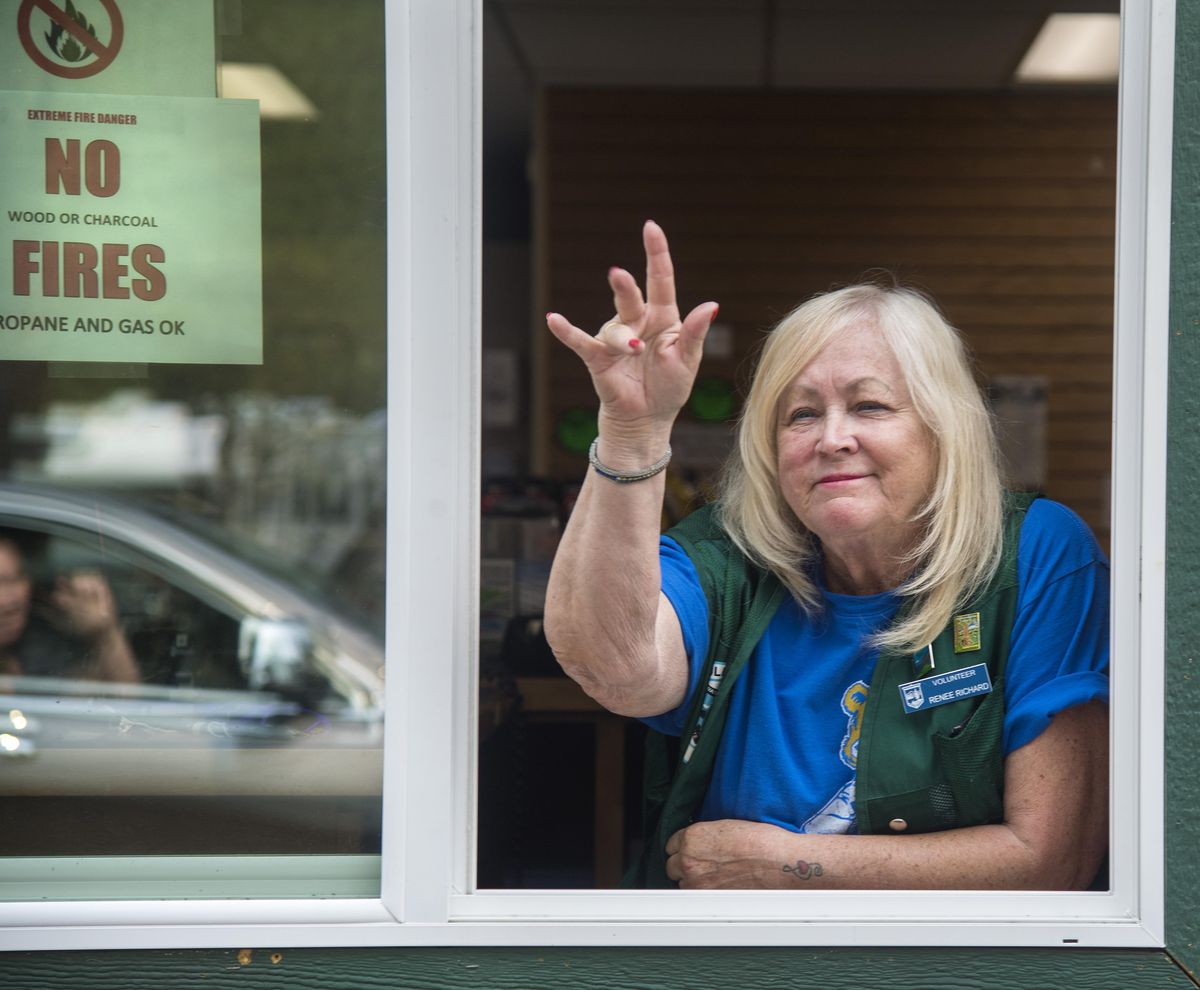Campfire ban burns some; okay with others

Tina Hecker and her grandson showed up to camp at Riverside State Park this week resigned to the fact that campfires were banned, even within the metal ring encircling their riverfront fire pit.
“Sure we’d love a campfire,” Hecker said. Grandson Ryan Steele, 10, was in agreement.
But they had an answer – a propane-powered s’mores maker.
“We planned on propane,” said Hecker, a well-equipped and experienced car camper.
Across the region, campgrounds are banning fires, even inside rings of developed sites. The Colville National Forest earlier this week announced the ban at its campgrounds, and Lake Roosevelt National Recreation Area also has banned all campfires.
The Washington Department of Natural Resources has banned all campfires on its lands as of Friday.
Other agencies may enact bans, so check their websites or call ahead.
Renee Ri’chard, a friendly camp host at Riverside State Park, has had her ears singed by unhappy campers both on the phone and in person when they arrive to check in.
All fire circles in the campground have printed cards advising campers that the fire ban is in place. But propane devices are allowed.
“Total complaints. People are not happy,” Ri’chard said.
Despite the ban and the smoke pollution, the park has been filled to capacity this week.
“It sucks not having a fire,” said Kia Kesler.
She and her companion, Joel Ferguson, drove up to Spokane from Tri-Cities to enjoy a stay next to the scenic Bowl and Pitcher rapids and rocks.
They brought salmon burgers and hot dogs for a barbecue on charcoal, but ended up eating sandwiches.
They were making the best of it with a few beers.
The campfire ban didn’t “totally ruin the trip,” he said, but it sure put a damper on it.
The bans also apply to the use of charcoal, which burns hotter than wood and can release smoldering embers for hours, officials said.
Guy Gifford, spokesman for DNR in Northeast Washington, said the heavy rain and saturated soils this spring germinated dormant plant seeds that were on the ground mixed with grass.
If it is dry, the plant seeds don’t sprout, so the fine fuels along the ground aren’t as big of a risk factor.
When an ember is thrown, there is a greater likelihood of fire starting under this year’s conditions.
That’s one reason bans have been imposed for developed campgrounds.
Campfire bans are common on undeveloped lands that are open to dispersed camping, but bans in developed campgrounds don’t occur every year, he said.
Officials said they don’t like to throw water on people’s fun.
“Sometimes camping isn’t camping without a fire,” said Franklin Pemberton, spokesman for the Colville National Forest.
As soon as the fire ban was enacted, the forest office starting getting reports of violations.
But Pemberton said, “I think most people understand how dry and volatile fuels are out there.”
A camper from Castlegar, British Columbia, was staying with her husband in their RV at Riverside State Park to attend the Willie Nelson show at the Northern Quest Casino this week.
She said she once witnessed a fire triggered by embers from a overly large fire in a campfire ring in a developed site in British Columbia.
“I’m in total agreement” with the ban, she said, giving only her first name, Denise.
Kids seemed especially eager to make their s’mores and watch the flames. Still, the adjustments might take some patient explaining, said Kristina Russell, director of a day camp at Riverside State Park.
She was supervising 20 kids ages 9 and 10 from Post Falls through that city’s Kamp Ka-Mee-Lin.
“We prepared them before we came,” she said about the no-campfire rule. “They’re pretty OK with it.”
The Idaho Panhandle National Forests is not banning campfires in designated recreation areas. However, there are bans on fires outside of campgrounds.
Smoking outside of a vehicle or building is also prohibited outside of campgrounds, except for when a vehicle is stopped and there is a three-foot-diameter area barren of vegetation in the Panhandle forest.
Similar rules are in effect widely across the region. Some areas have stricter rules on smoking. It’s best to check with the land-owning agency or read postings when you arrive.
Statistics show the reason for concern.
DNR this year has responded to 240 wildfires in its Northeast Washington area through Aug. 9. That includes Spokane, Stevens, Pend Oreille, Okanogan and Ferry counties and Lincoln County north of U.S. Highway 2.
Of those, only 25 were attributed to lightning.
Those numbers don’t include fires on national forests.
Last year, DNR covered 244 fires for the entire year.
The peak in recent years was 349 in 2015, the same year that Washington saw record one million acres go up in flames.